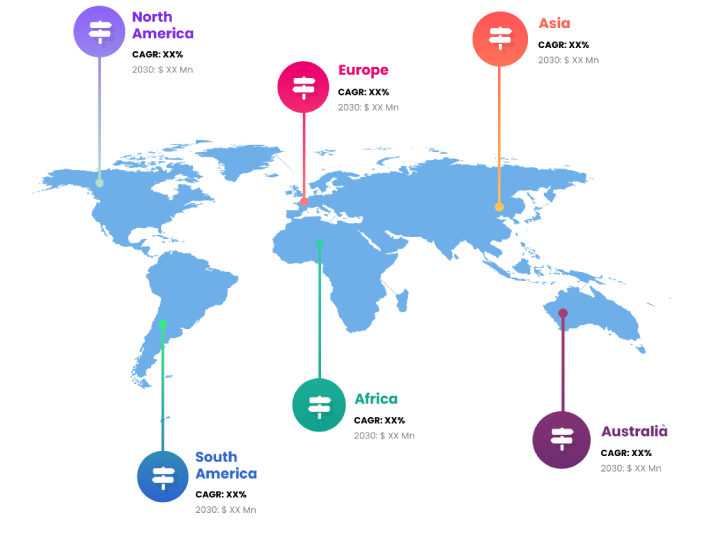
The rapid uptake of new molecular imaging techniques, the growing need for non-invasive small animal imaging methods, the heavy involvement of pharmaceutical and biotechnology companies, and the growing preference of end users for multimodality systems all contribute to a strong research and development infrastructure for life science research. Because of these reasons, the Optical Preclinical Imaging Market is expanding all over the world, but notably in the Americas.
One definition of preclinical imaging is the use of imaging techniques to study live animals, most often in the context of drug development. In vivo molecular imaging for illness diagnosis and treatment is another potential use of this technology. As such, it facilitates the transfer of knowledge from laboratory studies to real-world clinical trials of drugs. Molecular basis visualization is accomplished by the use of optical imaging techniques like positron emission tomography (PET), bioluminescence, and single-photon emission computed tomography (SPECT).
One component of preclinical drug research and discovery that is gaining popularity is preclinical optical imaging. This method enables the molecular-level tracking of biological activities in real-time and provides a virtual window into the animal. Excellent sensitivity, low cost, great throughput, ease of use, and absence of radiation characterize this method. With its exceptionally high sensitivity, it can track the development of diseases and assess the efficacy of potential drugs.
Phenotyping, medication discovery, and disease etiology all rely heavily on preclinical imaging. The major objective is to shorten and improve the efficiency of drug development while simultaneously raising the probability of clinical success. Animal models have been revolutionized in preclinical drug discovery and development by the advent of noninvasive in vivo imaging techniques, which allow for rapid and effective screening of drug efficacy.
During the preclinical stage of drug discovery and development, researchers conduct in vitro and in vivo tests to guarantee the medication candidate is safe to test in humans before clinical trials begin. Animal models are utilized in preclinical research to aid in the study of human diseases and the creation of novel treatments. If we want to know how a treatment will work, we need an animal model that is biologically relevant. One key aspect of these R&D endeavors is the utilization of small animal models in the basic and preclinical sciences. These models serve as a link between the discovery of molecules and their application in therapeutic settings.
Improvements in molecular imaging technology are largely responsible for the surge in optical preclinical imaging. Advances in nuclear medicine and molecular imaging have greatly benefited medical diagnosis and treatment, and these fields are only going to get better. Nuclear medicine and molecular imaging are undergoing significant change due to a number of factors, including the increasing number of chronic diseases, an aging population, and limited global resources.
The Optical Preclinical Imaging Market is seeing rapid expansion due to the growing number of clinical research organizations (CROs) and the increasing reliance on optical imaging technologies for in vivo drug development investigations. Market expansion is being propelled by a number of factors, including enhanced financing for preclinical research from both public and commercial sources, the creation of targeted therapies, and partnerships between pharmaceutical and biotechnology businesses. In addition, new avenues for expansion will open up as a result of technological development in the optical preclinical imaging market.
Reasons for the market's growth include increased funding for cutting-edge research, new public-private initiatives, and a surge in interest in non-invasive small animal imaging techniques brought about by breakthroughs in molecular imaging. This market is expected to experience rapid growth due to factors such as the increasing interest in research and development, the rapid advancement of technological capabilities leading to better hybrid imaging frameworks, the proliferation of clinical examination associations and organizations, and the increasing use of in-vivo imaging frameworks in preclinical research.
Also, many hospitals and clinics around the world reorganised their facilities in response to the COVID-19 pandemic, making more room for patients with the virus. The fast increase of COVID-19 cases caused a possible backlog in non-essential procedures. On the flip side, the optical preclinical imaging market was propelled by a plethora of preclinical research projects and activities, such as clinical trials to assess the safety and effectiveness of COVID-19 treatments, which were spearheaded by a variety of academics, businesses, and government agencies.
Report Coverage
Global Optical Preclinical Imaging research report categorizes the market for global based on various segments and regions, forecasts revenue growth, and analyzes trends in each submarket. Global Optical Preclinical Imaging report analyses the key growth drivers, opportunities, and challenges influencing the global market. Recent market developments and Optical Preclinical Imaging competitive strategies such as expansion, product launch and development, partnership, merger, and acquisition have been included to draw the competitive landscape in the market. The report strategically identifies and profiles the key Optical Preclinical Imaging market players and analyses their core competencies in each global market sub-segments.
| REPORT ATTRIBUTES | DETAILS |
|---|---|
| Study Period | 2017-2031 |
| Base Year | 2023 |
| Forecast Period | 2023-2031 |
| Historical Period | 2017-2021 |
| Unit | Value (USD Billion) |
| Key Companies Profiled | Arthrex Inc. (Germany), Johnson & Johnson Services, Inc. (U.S.), NuVasive Inc. (U.S.), Orthofix US LLC (U.S.), Pega Medical Inc. (Canada), Smith+Nephew (U.K.), Stryker (U.S.), WishBone Medical (U.S.), Zimmer Biomet (U.S.), Medtronic (Ireland), Auxein Medical (India), Implanet SA (U.S.), Merete GmbH (Germany), Mighty Oak Medical (U.S.) |
| Segments Covered | • By Product |
| Customization Scope | Free report customization (equivalent to up to 3 analyst working days) with purchase. Addition or alteration to country, regional & segment scope |
Key Points Covered in the Report
- Market Revenue of Optical Preclinical Imaging Market from 2021 to 2031.
- Market Forecast for Optical Preclinical Imaging Market from 2021 to 2031.
- Regional Market Share and Revenue from 2021 to 2031.
- Country Market share within region from 2021 to 2031.
- Key Type and Application Revenue and forecast.
- Company Market Share Analysis, Optical Preclinical Imaging competitive scenario, ranking, and detailed company
profiles. - Market driver, restraints, and detailed COVID-19 impact on Optical Preclinical Imaging
Market
Competitive Environment:
The research provides an accurate study of the major organisations and companies operating in the global Optical Preclinical Imaging market, along with a comparative evaluation based on their product portfolios, corporate summaries, geographic reach, business plans, Optical Preclinical Imaging market shares in specific segments, and SWOT analyses. A detailed analysis of the firms' recent news and developments, such as product development, inventions, joint ventures, partnerships, mergers and acquisitions, strategic alliances, and other activities, is also included in the study. This makes it possible to assess the level of market competition as a whole.
List of Major Market Participants
Arthrex Inc. (Germany), Johnson & Johnson Services, Inc. (U.S.), NuVasive Inc. (U.S.), Orthofix US LLC (U.S.), Pega Medical Inc. (Canada), Smith+Nephew (U.K.), Stryker (U.S.), WishBone Medical (U.S.), Zimmer Biomet (U.S.), Medtronic (Ireland), Auxein Medical (India), Implanet SA (U.S.), Merete GmbH (Germany), Mighty Oak Medical (U.S.)
Primary Target Market
- Market Players of Optical Preclinical Imaging
- Investors
- End-users
- Government Authorities
- Consulting And Research Firm
- Venture capitalists
- Third-party knowledge providers
- Value-Added Resellers (VARs)
Market Segment:
This study forecasts global, regional, and country revenue from 2019 to 2031. INFINITIVE DATA EXPERT has segmented the global Optical Preclinical Imaging market based on the below-mentioned segments:
Global Optical Preclinical Imaging Market, By Modality
Bioluminescence & Fluorescence Imaging Systems
Standalone Fluorescence Imaging Systems
Optical + X-ray & Optical + CT
Global Optical Preclinical Imaging Market, By End User
Pharma & Biotech Companies
Academic & Government Research Institutes
Contract Research Organizations
Global Optical Preclinical Imaging market, Regional Analysis
- Europe: Germany, Uk, France, Italy, Spain, Russia, Rest of Europe
- The Asia Pacific: China,Japan,India,South Korea,Australia,Rest of Asia Pacific
- South America: Brazil, Argentina, Rest of South America
- Middle East & Africa: UAE, Saudi Arabia, Qatar, South Africa, Rest of Middle East & Africa
You will get in-depth and extensive optical preclinical imaging market market research and competitor analysis for your business to help you develop more profound insights into the optical preclinical imaging market Market.
Through INFINITIVE Data Expert is a professional Market Research services, I will identify the optical preclinical imaging market market size, demand & opportunities, growth rate, and target audience with a comprehensive analysis of your competitors.



